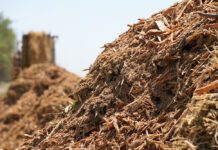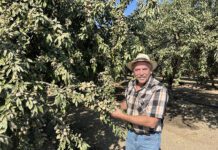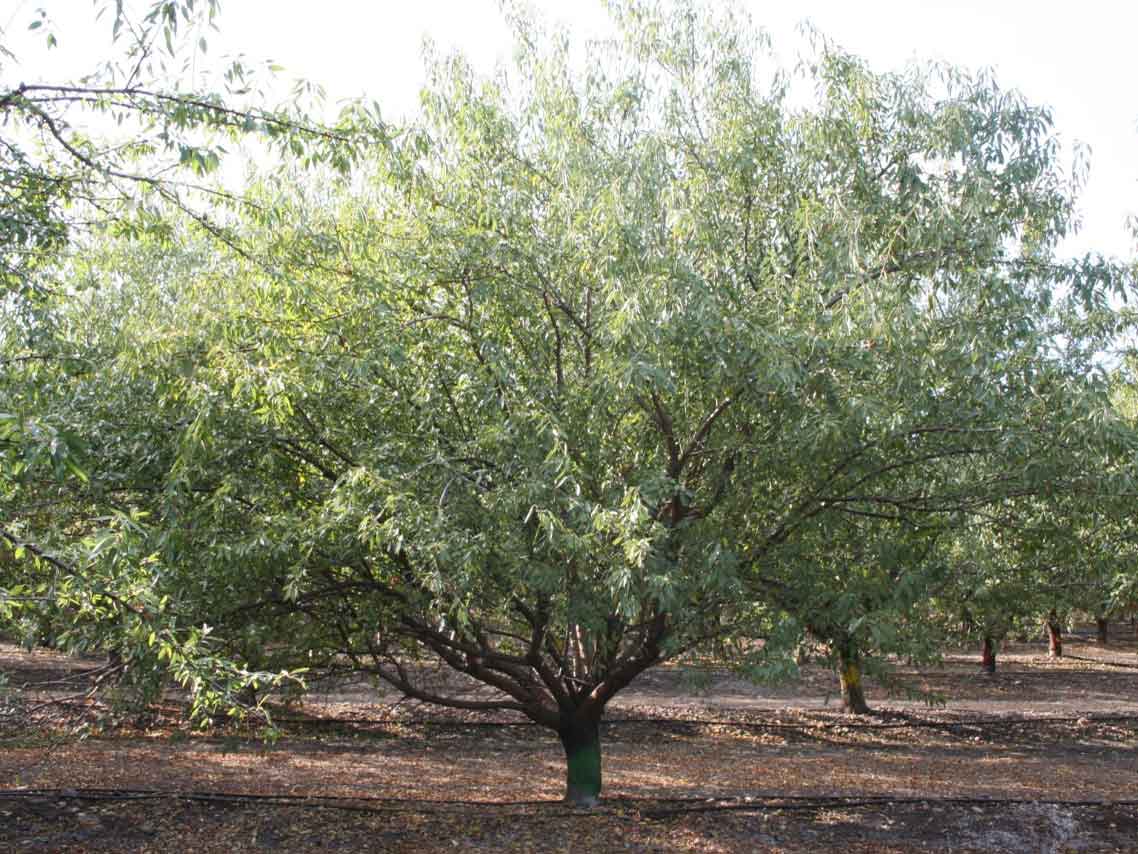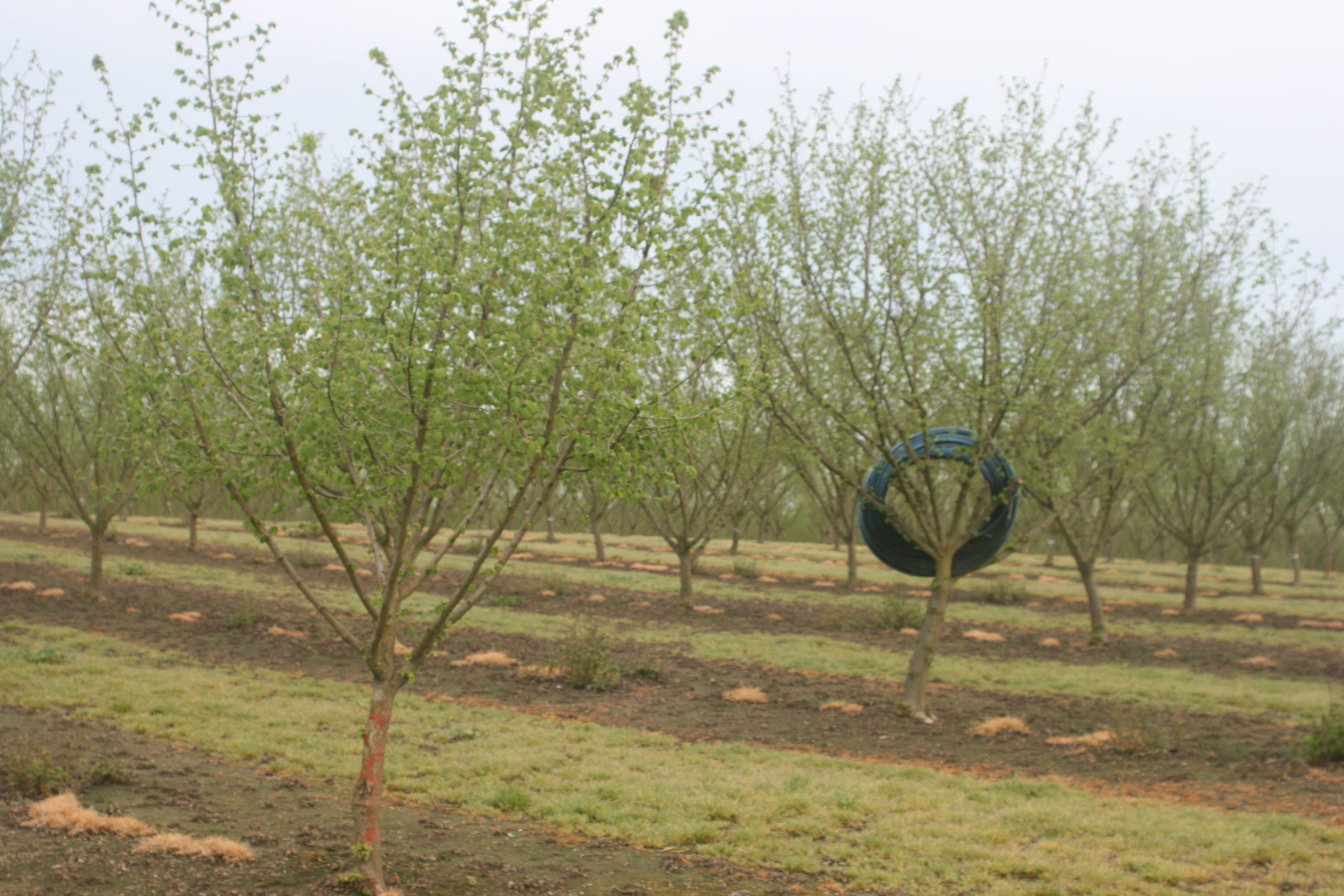
With the Trump administration back in the White House, the president’s pledge to impose steep tariffs on countries like China and implement stricter immigration policies is raising concerns for California’s almond industry. California, which produces 80% of the world’s almonds, is heavily reliant on exports to key markets, such as India, Europe and China, leaving the industry vulnerable to shifting trade and labor policies.
While the administration’s trade priorities remain uncertain, they are expected to focus on balancing protectionist policies with international diplomacy, according to former U.S. Trade Representative Sharon Bomer-Lauritsen, who spoke during a session examining the trade outlook under the new administration at The Almond Conference (TAC) in December. She suggested the administration might revisit tariffs imposed under previous leadership or explore new bilateral agreements.
Virtually every country uses tariffs, she noted, and while tariff policies have varied, their use has been a recurring theme in U.S. history and is not exclusive to the Trump administration. However, she emphasized the extensive scope and scale of President Trump’s tariffs.
“Trade negotiations are intricate,” Bomer-Lauritsen said. “While tariffs are often used as leverage, they can have unintended consequences for industries reliant on exports, such as California almonds.”
Retaliatory tariffs and limited free trade agreements have hindered the competitiveness of many U.S. exports, including almonds. During the U.S.-China trade war under the first Trump administration, steep tariffs made almonds less competitive in a critical market. Meanwhile, as Bomer-Lauritsen explained, the U.S. trails its competitors in establishing free trade agreements, with only 20 currently in place (the most recent dating back to 2012). In contrast, major competitors like Australia, a significant rival for California, have 30 agreements and are continuing to expand their trade networks.
The Biden administration, she also noted, maintained President Trump’s China tariffs and even expanded them to include certain products, such as electric vehicles. But it also pursued negotiated solutions with other countries, reaching an agreement with the European Union to lift retaliatory tariffs and achieving similar outcomes with India, Japan and South Korea.
In her 40 years of working in government trade policy, Bomer-Lauritsen said she has observed that every administration, regardless of political party, focuses on addressing the regulatory barriers that agricultural exports face each year.
“When you’ve got a regulatory issue where you have a problem getting into country X, there’s a great staff at the Foreign Ag Service, and the office at the U.S. Trade Representative, they’re there to help and work on those issues to the best of their ability,” she said.
The bottom line, Bomer-Lauritsen explained, is any tariffs enacted by the new administration will serve as a mechanism to create leverage in resolving differences, regardless of the issues at hand, which could also present potential opportunities.
“Whether that’s regulatory barriers, balance of trade or whatever the issues might be, I see this more as an ability to get those countries in good faith to the negotiating table to try and resolve these differences,” she said. “Agriculture can be on the table, whether there are tariff or non-tariff barriers.”

Economists Eye Tariffs, Labor Impacts
Almonds generate $6 billion in annual revenue, making them the largest U.S. crop by volume and the top specialty crop by export value. However, proposed tariffs of 60% to 100% on Chinese goods could severely impact the industry, making U.S. almonds less competitive in China. Exporters may face higher costs, oversupply in other regions and falling prices, worsening financial challenges for growers.
Scott Clemons, partner and chief investment strategist with Brown Brothers Harriman, said his company is closely monitoring trade and tariffs under the new administration.
“There’s nothing new about presidential tariff tactics,” Clemons said during TAC’s State of the Industry session. “Every president, literally, going back to George Washington, has used tariffs for one of two reasons: to level an unfair playing field when a foreign competitor was subsidizing a certain industry or to protect a nascent American industry.”
What sets this administration apart, he noted, is its commitment to applying blanket tariffs across the entirety of a nation’s imports.
“That’s kind of new, and it’s not altogether clear whether or not that falls within the purview of presidential prerogative,” he said. “This could lead to a clash with Congress.”
President Trump has described tariffs as a tool to restore American manufacturing, generate revenue for initiatives like tax cuts, and influence the behavior of other countries, Clemons explained.
“All of these are relatively untested, and it sets up an interesting dynamic with economic implications,” he said.
Proposed measures, such as a 20% tax on all imports and additional surcharges on Chinese goods, could push tariff levels to pre-World War II highs, but economists remain divided on whether such actions would significantly drive inflation. Clemons said a 20% tariff on imports would likely trigger a price shock in the first year, causing prices to rise temporarily.
“Maybe not by the full 20%, but prices will rise,” he said. “But they won’t continue rising in subsequent years unless additional tariffs are imposed. Economically, a tariff looks more like a price shock, similar to what we’ve seen in the oil sector from time to time, rather than a true inflationary impetus.”
Clemons also noted President Trump’s immigration policies could have a more lasting inflationary effect by exacerbating the already-tight labor market, where job openings exceed available workers.
“Right now, there are 600,000 more job openings than there are people to fill them,” he said. “If deportation policies remove workers from the labor force, the supply-demand imbalance will worsen.”
Undocumented workers play a significant role in agriculture, he added, with 30% employed in grading and sorting and 28% in general agricultural roles and animal breeding.
“The labor force in agriculture and construction is something that really warrants attention heading into 2025 if the administration is serious about implementing its campaign rhetoric,” Clemons said.

Opportunities Amid Challenges
While California almond growers face a complex trade landscape, opportunities exist, said Almond Board of California CEO Clarice Turner. She highlighted sustainability and innovation as key competitive advantages during the State of the Industry session at TAC.
“California almonds already have a reputation for quality,” Turner said. “By doubling down on environmentally friendly practices and leveraging advanced farming technologies, we can differentiate ourselves in an increasingly crowded market.”
Turner expressed optimism, citing strong demand, including a record-breaking streak of shipping over 200 million pounds for 11 consecutive months in the last crop year. Additionally, the industry sold more than 300 million pounds beyond what was produced, marking the largest swing in its history.
“Our carryout is now down to less than 500 million pounds, and we haven’t seen those levels since 2019,” she said.
Inventory Shortens After Highs
For the first time in five years, annual almond shipments exceeded receipts, reducing carryover inventory by 300 million pounds to 19% of annual shipments, slightly below the historical average, according to Neil Zacky, trade manager with Derco Foods, a family-owned business that supplies tree nuts globally.
“In the past decade, the industry typically carried over around 21% of annual shipments,” Zacky said on a panel during TAC’s State of the Industry session. “But going into the 2023 crop year, we brought in 31% of annual shipments.”
Buyers adopted a “hand-to-mouth” purchasing strategy, delaying orders to capitalize on better pricing amid high inventories, he explained. This strategy put pressure on processors to manage old crop sales while introducing the new crop.
“The reduced inventory had a noticeable impact on the market, especially for buyers needing specific varieties or grades,” Zacky said. “With limited stocks, buyers entered the market quickly and secured new crop for longer periods than usual.”
Strong demand has brought stability to the market, Zacky added, noting that managing inventory in India will be key for maintaining this foundation in the coming year. He also said while crop estimates and annual receipts remain crucial for marketing almonds throughout the year, ending inventory has become just as important in establishing a stable foundation for the year ahead.
“Over the years, both buyers and sellers have faced challenges managing supply during the transition,” Zacky said. “Looking ahead, the industry seems well-positioned to maintain balanced inventories, leading to more consistent pricing trends.”

Kristin Platts | Digital Content Editor and Social Correspondence
Kristin Platts is a multimedia journalist and digital content writer with a B.A. in Creative Media from California State University, Stanislaus. She produces stories on California agriculture through video, podcasts, and digital articles, and provides in-depth reporting on tree nuts, pest management, and crop production for West Coast Nut magazine. Based in Modesto, California, Kristin is passionate about sharing field-driven insights and connecting growers with trusted information.















